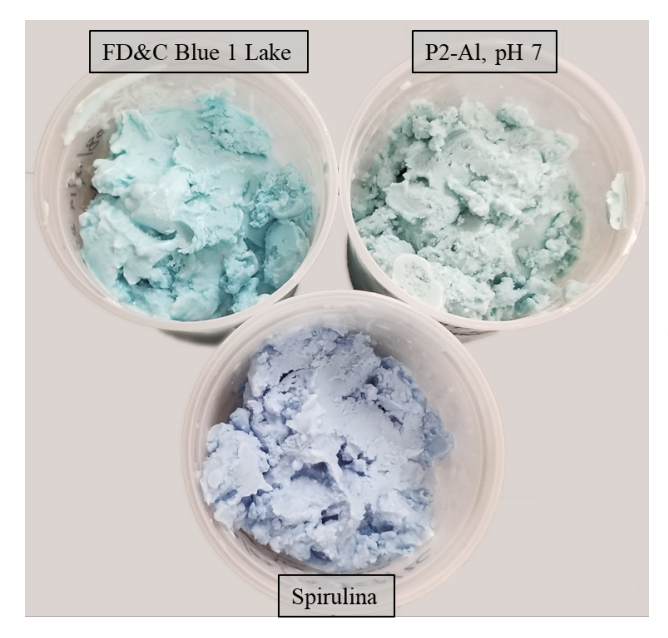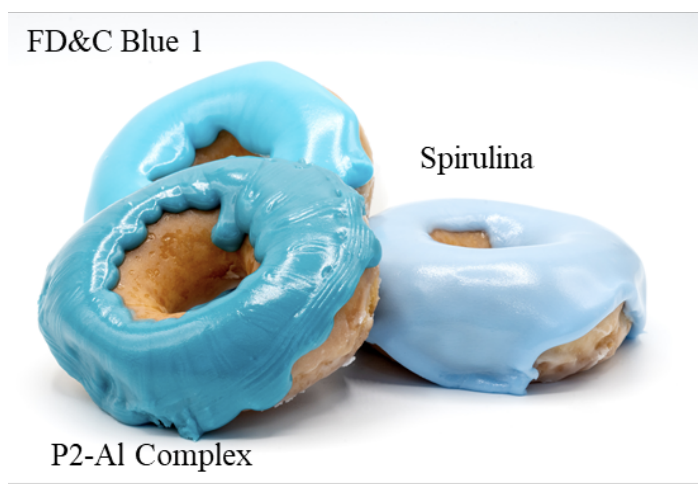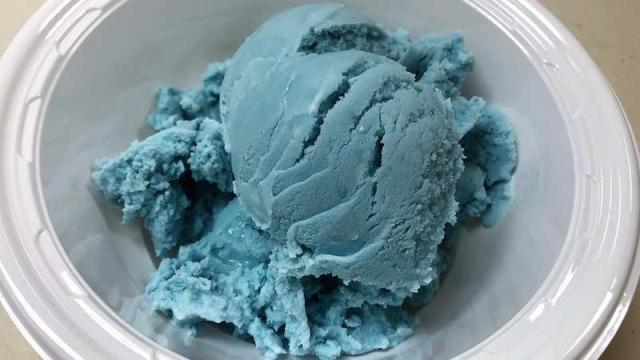Using pigments found in red cabbage, an international team of scientists has created a natural blue food colorant that could eventually replace synthetic versions.
The appearance of food and drinks very much matters, especially their colour, which can convey important information like flavour, nutritional value, and its physical condition. Indeed, no one wants to bite into a brown apple, a blackened banana, or a fuzzy white strawberry.
Fruits and vegetables tend to come in colours like red, orange, yellow, and green, but, as for blue, not so much (with all due respect to the humble blueberry). Other things in nature, whether animal, plant, or mineral, are also bereft of blue colours, forcing manufacturers to find alternative solutions to colour their products. And sure, we relish our blue Skittles, blue moon ice cream, and blue energy drinks, but colorants are also important for the cosmetic, pharmaceutical, and textile industries. As a devoted fan of the Toronto Blue Jays and Maple Leafs, I take this issue very seriously.

Synthetic blue colorants include the widely used FD&C Blue No. 1 for cyan and indigotine FD&C Blue No. 2 for indigo. Natural options, such as dyes produced from spirulina, huito, and gardenia, don’t quite capture the desired cyan blue, and they often don’t mix well with other colorants, leading to undesirable results.
Accordingly, the quest to find a natural blue dye — cyan in particular — that can serve as a replacement to synthetics “remains an industry-wide challenge and the subject of several research programs worldwide,” according to a new research paper published in Science Advances.
Excitingly, the authors of the paper, including experts from the University of California Davis, Ohio State, Nagoya University in Japan, and the University of Avignon in France, among other institutions, appear to have developed exactly this: a natural cyan food colouring. The new blue can be sourced from red cabbage in meaningful quantities, potentially setting the stage for the colorant to be used across a wide range of applications.
Extracts derived from red cabbage tend to come in reds and purples. This cabbage does produce a pigment, called blue anthocyanin, that produces the desirable results, but scientists have only been able to extract the molecule in trace amounts.

Enter the new research, which describes a method for converting other red cabbage anthocyanin molecules into a blue compound. The scientists made it happen by considering millions (yes, millions) of enzymes catalogued in the scientific literature and testing the top candidates in the lab. With insights gleaned from synthetic biology, and using a computational protein design tool, the researchers then constructed an enzyme capable of performing the desired conversion with a high degree of efficiency. This proved to be no simple task, as it involved a massive number of potential protein sequences, according to a UC Davis press release.
“We used these tools to search the universe for the enzyme we’re interested in,” Justin Siegel, a co-author of the paper and a professor at the UC Davis Department of Chemistry and Innovation Institute for Food and Health, said in the release.
Lab tests showed that it worked: The custom-built enzyme took red anthocyanins and turned them into a useful blue extract, dubbed the P2-Al complex, or P2 for short. So useful, in fact, that the scientists used it to create blue ice cream, blue icing, and sugar-coated lentils. In tests, P2 also played well with others, blending with other compounds to produce vivid green food colouring. Importantly, the “stability of this novel colorant in these product applications is excellent as well, with no notable colour decay over a 30-day period when stored at ambient conditions,” wrote the authors in the study.
The scientists have not yet evaluated the colorant to make sure it’s safe to eat, but as co-author Kumi Yoshida from Nagoya University told New Scientist, red cabbage anthocyanins “have a long, long history in our diets.” Good point, but we still need to make sure this stuff — produced by a novel enzyme — won’t result in any adverse health effects.
Should everything work out, including the complicated challenge of mass production, we could see P2 in the ingredients list of our favourite products. Gazing at that delicious-looking bowl of blue ice cream, that’s a prospect I can get behind.
